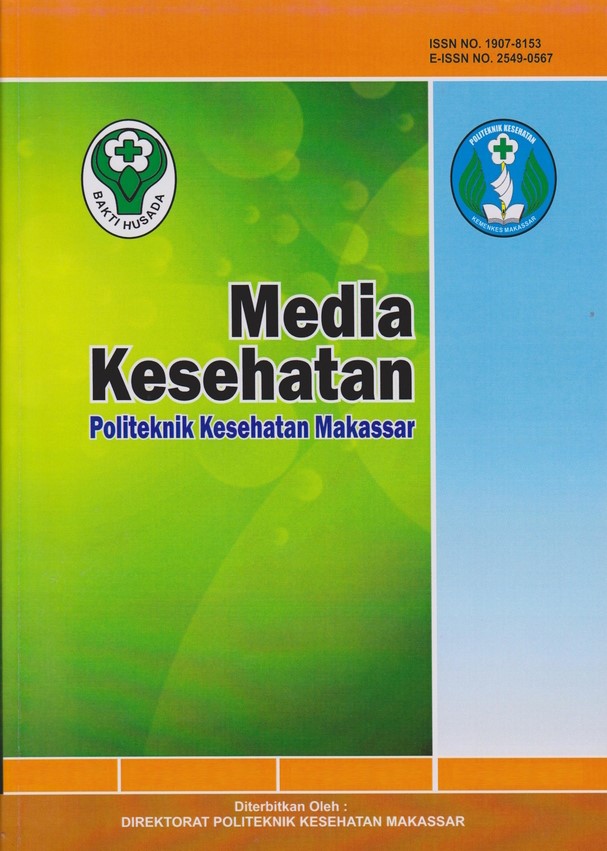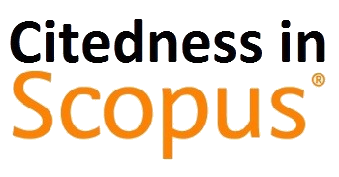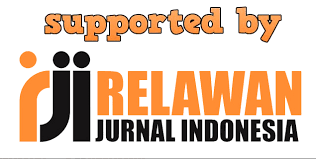Analysis of the Antioxidant Activity of Plant-Based Nanoemulsions in Pharmaceutical and Cosmetic Applications: A Literature Review
DOI:
https://doi.org/10.32382/medkes.v20i1.1458Keywords:
nanoemulsion, medicinal plants, bioavailability, drug delivery systemAbstract
Plant-based nanoemulsions are increasingly attracting attention in pharmaceutical and cosmetic applications due to their ability to enhance the stability, solubility, and bioavailability of natural active compounds, such as flavonoids, terpenoids, and polyphenols, which possess antioxidant activity. However, the challenge lies in optimizing the nanoemulsion formulation to enhance the efficacy of these compounds. This study aims to explore the potential of plant-based nanoemulsions in enhancing the effectiveness of antioxidant compounds and to provide recommendations for developing more stable and efficient nanoemulsion formulations for pharmaceutical and cosmetic applications. A literature review was conducted by analyzing relevant scientific articles on the use of plant-based nanoemulsions in enhancing antioxidant activity. This study includes various studies that describe the methods of preparation, physicochemical characteristics, and applications of nanoemulsions in the biomedical and cosmetic fields. Plant-based nanoemulsions, such as those using Cordyceps mushroom extract and Mucuna seeds, exhibit stronger antioxidant activity and good stability. Formulations with small particle sizes and uniform particle distribution exhibit higher bioavailability and efficacy, making them promising for application in medical therapy and skin care. Plant-based nanoemulsions offer significant potential for enhancing the efficacy of antioxidant compounds in the pharmaceutical and cosmetic fields. Further development is needed through laboratory and clinical testing to ensure the efficacy and stability of nanoemulsion formulations in real-world applications.
Keywords: nanoemulsion, medicinal plants, bioavailability, drug delivery system
References
Suryawati AAMA, Santika IWM. Potensi dan Efektivitas Farmakologi Ekstrak Kembang Telang (Clitoria ternatea L.) sebagai Suplemen Antidiabetes: A Systematic Review. Pros Work dan Semin Nas Farm. 2023;2(3):61–76.
Dar RA, Shahnawaz M, Ahanger MA, Majid I ul. Exploring the Diverse Bioactive Compounds from Medicinal Plants: A Review. J Phytopharm. 2023;12(3):189–95.
Awuchi CG. The Biochemistry, Toxicology, and Uses of the Pharmacologically Active Phytochemicals: Alkaloids, Terpenes, Polyphenols, and Glycosides. J Food Pharm Sci. 2020;4(2):2.
Riaz M, Khalid R, Afzal M, Anjum F, Fatima H, Zia S, et al. Phytobioactive compounds as therapeutic agents for human diseases: A review. Food Sci Nutr. 2023;11(6):2500–29.
Rekatsina M, Paladini A, Piroli A, Zis P, Pergolizzi J V., Varrassi G. Pathophysiology and Therapeutic Perspectives of Oxidative Stress and Neurodegenerative Diseases: A Narrative Review. Adv Ther. 2020;37(1):113–39.
Muscolo A, Mariateresa O, Giulio T, Mariateresa R. Oxidative Stress: The Role of Antioxidant Phytochemicals in the Prevention and Treatment of Diseases. Int J Mol Sci. 2024;25(6):1–22.
Pisoschi AM, Pop A. The role of antioxidants in the chemistry of oxidative stress: A review. Eur J Med Chem. 2015;97(4):55–74.
Rahal A, Kumar A, Singh V, Yadav B, Tiwari R, Chakraborty S, et al. Oxidative stress, prooxidants, and antioxidants: The interplay. Biomed Res Int. 2024;20(14):1–19.
Ulhaqi TD. Formulasi dan Uji Karakteristik SNEDDS Ekstrak Umbi Bawang Dayak (Eleutherine palmifolia L) denagn Variasi Perbandingan Minyak Kaprilat, Surfaktan dan Ko-surfaktan. Doctoral dissertation, Universitas Islam Negeri Maulana Malik Ibrahim; 2020.
Sari CR. Uji Toksisitas Nanoemulsi Minyak Sawit Merah (Red Palm Oil/RPO) Terhadap Larva Udang Artemia salina Dengan Metode BSLT (Brine Shrimp Lethality Test). Doctoral dissertation, Universitas Jambi; 2023.
Ainun. Formulasi dan uji karakteristik Self-Nanoemulsifying Drug Delivery System (SNEDDS) Ekstrak Bawang Dayak (Elautherine palmifolia (L.) Merr) menggunakan perbandingan variasi surfaktan. Doctoral dissertation, Universitas Islam Negeri Maulana Malik Ibrahim; 2020.
Ling JKU, Sam JH, Jeevanandam J, Chan YS, Nandong J. Thermal Degradation of Antioxidant Compounds: Effects of Parameters, Thermal Degradation Kinetics, and Formulation Strategies. Food Bioprocess Technol. 2022;15(9):1919–35.
Afzal O, Altamimi ASA, Nadeem MS, Alzarea SI, Almalki WH, Tariq A, et al. Nanoparticles in Drug Delivery: From History to Therapeutic Applications. Nanomaterials. 2022;12(24):1–27.
Abdi Syahputra R, Dalimunthe A, Utari ZD, Halim P, Sukarno MA, Zainalabidin S, et al. Nanotechnology and flavonoids: Current research and future perspectives on cardiovascular health. J Funct Foods [Internet]. 2024 Sep;120:106355. Available from: https://linkinghub.elsevier.com/retrieve/pii/S1756464624003578
Singh Y, Meher JG, Raval K, Khan FA, Chaurasia M, Jain NK, et al. Nanoemulsion: Concepts, development and applications in drug delivery. J Control Release [Internet]. 2017 Apr;252:28–49. Available from: https://linkinghub.elsevier.com/retrieve/pii/S0168365917301128
Abaszadeh F, Ashoub MH, Amiri M. Nanoemulsions Challenges and Future Prospects as a Drug Delivery System. In 2023. p. 217–43. Available from: https://link.springer.com/10.1007/978-981-99-5398-1_13
Lewińska A, Domżał-Kędzia M, Maciejczyk E, Łukaszewicz M, Bazylińska U. Design and engineering of “green” nanoemulsions for enhanced topical delivery of bakuchiol achieved in a sustainable manner: A novel eco-friendly approach to bioretinol. Int J Mol Sci. 2021;22(18):1–19.
Naufa F, Mutiah R, Yen Y, Indrawijaya A. Studi in Silico Potensi Senyawa Katekin Teh Hijau (Camellia sinensis) sebagai Antivirus SARS CoV-2 terhadap Spike Glycoprotein (6LZG) dan Main Protease (5R7Y). J Food Pharm Sci. 2021;11(1):584–96.
Rahayu TP, Kiromah NZW, Maretha F. Perbandingan Aktivitas Antibakteri Minyak Atsiri Daun Serai Dan Ekstrak Pandan Wangi Terhadap Staphylococcus epidermidis. J Farm Klin dan Sains. 2021;1(1):18–25.
Malahayati N, Widowati TW, Febrianti A. Karakterisasi Ekstrak Kurkumin dari Kunyit Putih (Kaemferia rotunda L.) dan Kunyit Kuning (Curcuma domestica Val.). agriTECH. 2021;41(2):134–44.
Eid AM, Al-Hawari H, Nazzal S, Khudarieh S. Development of Vitis vinifera nanoemulgel and evaluation of its potential anticancer, antimicrobial and anti-inflammatory. BMC Complement Med Ther. 2025;25(1):1–12.
Arazmjoo S, Es-Haghi A, Mahmoodzadeh H. Evaluation of anti-cancer and antioxidant properties of nanoemulsions synthesized by Nigella Sativa L. tincture. Nanomedicine J. 2021;8(1):57–64.
Alam A, Ansari MJ, Alqarni MH, Salkini MA, Raish M. Antioxidant, Antibacterial, and Anticancer Activity of Ultrasonic Nanoemulsion of Cinnamomum Cassia L. Essential Oil. Plants. 2023;12(4):1–15.
Jiang T, Liao W, Charcosset C. Recent advances in encapsulation of curcumin in nanoemulsions: A review of encapsulation technologies, bioaccessibility and applications. Food Res Int [Internet]. 2020 Jun;132:109035. Available from: https://linkinghub.elsevier.com/retrieve/pii/S0963996920300600
Nikolaev B, Yakovleva L, Fedorov V, Li H, Gao H, Shevtsov M. Nano- and Microemulsions in Biomedicine: From Theory to Practice. Pharmaceutics. 2023;15(7):1–39.
Mutiara W, Dahlan UA, Permadi A, Dahlan UA, Suharto T, Dahlan UA. Review : Formulasi dan Karakteristik Nanoemulsi Bahan Alam Dalam Peningkatan Keefektifitasan Terapeutik. Semin Nas Inov dan Teknol Univ Ahmad Dahlan. 2024;1–7.
Hazarika H, Krishnatreyya H, Chattopadhyay P, Saha A, Pathak Y V., Zaman MK. Nanoemulsion Delivery of Herbal Products: Prospects and Challenges. In: Nano Medicine and Nano Safety [Internet]. Singapore: Springer Singapore; 2020. p. 267–88. Available from: http://link.springer.com/10.1007/978-981-15-6255-6_11
Bahuguna A, Ramalingam S, Kim M. Formulation, Characterization, and Potential Application of Nanoemulsions in Food and Medicine. In 2020. p. 39–61. Available from: http://link.springer.com/10.1007/978-3-030-31938-0_3
Das P, Panda JR, Patro CN, Sahu B, Patnaik SS. A Comprehensive Review of Nanoemulsion Applications and their Recent Advancements. Curr Nanomater [Internet]. 2023 Sep;8(3):209–23. Available from: https://www.eurekaselect.com/210611/article
Fodouop Kouam AW. A Systematic Literature Review of Post-Positivism and Critical Realism as Epistemological Frameworks in Educational Research. Int J Chang Educ [Internet]. 2025 Feb 6; Available from: https://ojs.bonviewpress.com/index.php/IJCE/article/view/4338
Rizki T, Yasni S, Muhandri T, Yuliani S. Sintesis Nanoemulsi dari Ekstrak Kulit Manggis dengan Metode Energi Tinggi. J Teknol dan Ind Pangan. 2023;34(1):109–18.
Chookiat S, Theansungnoen T, Kiattisin K, Intharuksa A. Nanoemulsions Containing Mucuna pruriens (L.) DC. Seed Extract for Cosmetic Applications. Cosmetics. 2024;11(1).
Bureekaew K, Laphookhieo S, Surassmo S, Suwantong O. Nanoencapsulation of Garcinia cowa leaf extract and its biological activities for potential use in pharmaceutical and cosmeceutical products. Colloid Polym Sci. 2023;301(12):1449–58.
Tominc GC, Dalmagro M, Pereira E da CA, Adamczuk MS, Bonato FGC, Almeida RM de, et al. Formulation and Characterization of Nanoemulsion Incorporating Chamomilla recutita L. Extract Stabilized with Hyaluronic Acid. Pharmaceutics. 2024;16(6).
Rupa EJ, Li JF, Arif MH, Yaxi H, Puja AM, Chan AJ, et al. Cordyceps militaris fungus extracts-mediated nanoemulsion for improvement antioxidant, antimicrobial, and anti-inflammatory activities. Molecules. 2020;25(23):1–14.
da Silva AO, Sassi GR, Santos MKMS, Oliveira SMPV, Gomide G, Junior VFV, et al. Andiroba Oil (Carapa guianensis) and ginger extract (Zingiber officinale)-loaded nanoemulsion: Elaboration, characterization, antioxidant activity, and cell viability investigation. Colloids Surfaces A Physicochem Eng Asp [Internet]. 2024 Dec;702:134990. Available from: https://linkinghub.elsevier.com/retrieve/pii/S0927775724018545
Mazzarino L, da Silva Pitz H, Lorenzen Voytena AP, Dias Trevisan AC, Ribeiro-Do-Valle RM, Maraschin M. Jaboticaba ( Plinia peruviana ) extract nanoemulsions: development, stability, and in vitro antioxidant activity. Drug Dev Ind Pharm [Internet]. 2018 Apr 3;44(4):643–51. Available from: https://www.tandfonline.com/doi/full/10.1080/03639045.2017.1405976
Pathania R, Najda A, Chawla P, Kaushik R, Khan MA. Low-energy assisted sodium alginate stabilized Phyllanthus niruri extract nanoemulsion: Characterization, in vitro antioxidant and antimicrobial application. Biotechnol Reports [Internet]. 2022 Mar;33:e00711. Available from: https://linkinghub.elsevier.com/retrieve/pii/S2215017X22000121
Fitri IA, Suryani CL, Murtisari A. The Effects of Heat Treatment on the Stability of Oil-in-Water Nanoemulsions Stabilized by Nanocellulose. IOP Conf Ser Earth Environ Sci [Internet]. 2025 Feb 1;1460(1):012040. Available from: https://iopscience.iop.org/article/10.1088/1755-1315/1460/1/012040
Nejadmansouri M, Hosseini SMH, Niakosari M, Yousefi GH, Golmakani MT. Physicochemical properties and oxidative stability of fish oil nanoemulsions as affected by hydrophilic lipophilic balance, surfactant to oil ratio and storage temperature. Colloids Surfaces A Physicochem Eng Asp [Internet]. 2016 Oct;506:821–32. Available from: https://linkinghub.elsevier.com/retrieve/pii/S0927775716305970
Bazana MT, da Silva SS, Codevilla CF, de Deus C, Lucas BN, Ugalde GA, et al. Development of nanoemulsions containing Physalis peruviana calyx extract: A study on stability and antioxidant capacity. Food Res Int [Internet]. 2019 Nov;125:108645. Available from: https://linkinghub.elsevier.com/retrieve/pii/S0963996919305319
Silva HD, Cerqueira MA, Vicente AA. Influence of surfactant and processing conditions in the stability of oil-in-water nanoemulsions. J Food Eng [Internet]. 2015 Dec;167:89–98. Available from: https://linkinghub.elsevier.com/retrieve/pii/S0260877415003465
Alyousef MH, Kamal MS, Murtaza M, Hussain SMS, Raza A, Patil S, et al. Enhancing Aqueous Stability of Anionic Surfactants in High Salinity and Temperature Conditions with SiO2 Nanoparticles. ACS Omega. 2024;
Gafarov SA, Chernov MV, Ivanov AB, Faizov RA. USE OF ETHOXYLATED ALCOHOLS WITH ANIONIC SURFACTANTS FOR ENHANCED RECOVERY. Pet Eng [Internet]. 2024 May 3;22(2):91–106. Available from: https://ngdelo.ru/article/view/12483
Xu LM, Huang TP, Alotaibi M, Boqmi A. Novel Thermal Stimuli-Responsive Surfactants to Reduce Operation Costs for Chemical Flooding. In: SPE Improved Oil Recovery Conference [Internet]. SPE; 2024. Available from: https://onepetro.org/SPEIOR/proceedings/24IOR/24IOR/D021S012R001/544378
Rafifa M, Zahra AA, Putra HE, Aini KN, Sabrina LM, Maulida VS. Literatur Review: Pengaruh Jenis Surfaktan terhadap Stabilitas Fisik Mikroemulsi. J Integr Kesehat Sains [Internet]. 2025 Feb 1;7(1):46–52. Available from: https://ejournal.unisba.ac.id/index.php/jiks/article/view/14399
Alyousef MH, Kamal MS, Murtaza M, Hussain SMS, Raza A, Patil S, et al. Enhancing Aqueous Stability of Anionic Surfactants in High Salinity and Temperature Conditions with SiO 2 Nanoparticles. ACS Omega [Internet]. 2024 Dec 17;9(50):49804–15. Available from: https://pubs.acs.org/doi/10.1021/acsomega.4c08484
Gupta A, Eral HB, Hatton TA, Doyle PS. Nanoemulsions: formation, properties and applications. Soft Matter [Internet]. 2016;12(11):2826–41. Available from: https://xlink.rsc.org/?DOI=C5SM02958A
Moghassemi S, Dadashzadeh A, Azevedo RB, Amorim CA. Nanoemulsion applications in photodynamic therapy. J Control Release [Internet]. 2022 Nov;351:164–73. Available from: https://linkinghub.elsevier.com/retrieve/pii/S0168365922006307
Wang D, Zhong M, Sun Y, Fang L, Sun Y, Qi B, et al. Effects of pH on ultrasonic-modified soybean lipophilic protein nanoemulsions with encapsulated vitamin E. LWT [Internet]. 2021 Jun;144:111240. Available from: https://linkinghub.elsevier.com/retrieve/pii/S0023643821003935
Lehri D, Kumari N, Singh RP. Ultrasound-assisted production and characterization of rice bran lecithin-based nanoemulsions. J Dispers Sci Technol [Internet]. 2021 Jul 14;42(9):1368–75. Available from: https://www.tandfonline.com/doi/full/10.1080/01932691.2020.1764368
Gorain B, Choudhury H, Biswas E, Barik A, Jaisankar P, Pal TK. A novel approach for nanoemulsion components screening and nanoemulsion assay of olmesartan medoxomil through a developed and validated HPLC method. RSC Adv [Internet]. 2013;3(27):10887. Available from: https://xlink.rsc.org/?DOI=c3ra41452c
Alzorqi I, Ketabchi MR, Sudheer S, Manickam S. Optimization of ultrasound induced emulsification on the formulation of palm-olein based nanoemulsions for the incorporation of antioxidant β-d-glucan polysaccharides. Ultrason Sonochem [Internet]. 2016 Jul;31:71–84. Available from: https://linkinghub.elsevier.com/retrieve/pii/S1350417715300973
Đoković JB, Savić SM, Mitrović JR, Nikolic I, Marković BD, Randjelović D V., et al. Curcumin Loaded PEGylated Nanoemulsions Designed for Maintained Antioxidant Effects and Improved Bioavailability: A Pilot Study on Rats. Int J Mol Sci [Internet]. 2021 Jul 27;22(15):7991. Available from: https://www.mdpi.com/1422-0067/22/15/7991
Hagenbush CL. Practical and Theoretical Distinctions between Drugs and Cosmetics. Drug Inf J [Internet]. 1987 Oct 28;21(4):403–8. Available from: http://journals.sagepub.com/doi/10.1177/009286158702100405
Lima PB, Dias JAF, Cassiano D, Esposito ACC, Bagatin E, Miot LDB, et al. Concerns on comparing drugs in dermatologic treatments from different suppliers. Int J Dermatol [Internet]. 2021 Feb 19;60(2):256–7. Available from: https://onlinelibrary.wiley.com/doi/10.1111/ijd.15371
REZHIN DHAHIR FATAH RASJ. GREEN CONCEPTS AND MATERIAL FLOW COST ACCOUNTING APPLICATIONS FOR MANUFACTURING COMPANY: APPROACH FOR COMPANY SUSTAINABILITY. Russ Law J [Internet]. 2023 Apr 7;11(9s). Available from: https://russianlawjournal.org/index.php/journal/article/view/1803
Califf RM, McCall J, Mark DB. Cosmetics, Regulations, and the Public Health. JAMA Intern Med [Internet]. 2017 Aug 1;177(8):1080. Available from: http://archinte.jamanetwork.com/article.aspx?doi=10.1001/jamainternmed.2017.2773
Rocca R, Acerbi F, Fumagalli L, Taisch M. Sustainability paradigm in the cosmetics industry: State of the art. Clean Waste Syst [Internet]. 2022 Dec;3:100057. Available from: https://linkinghub.elsevier.com/retrieve/pii/S2772912522000574
Ratnasari, Fikri Hidayat A, Rahma H. Formulasi Sediaan Nanoemulsi Minyak Biji Rosehip. Bandung Conf Ser Pharm [Internet]. 2024 Aug 14;4(2):585–92. Available from: https://proceedings.unisba.ac.id/index.php/BCSP/article/view/14563
Larasati SP, Jusnita N. FORMULASI NANOEMULSI EKSTRAK KUNYIT (Curcuma longa L.) SEBAGAI ANTIOKSIDAN. J Pharm Sci [Internet]. 2020 Jun 30;3(1):33–41. Available from: https://journal-jps.com/index.php/jps/article/view/38
- M. Uji Efek Antioksidan Formulasi Nanoemulsi Ekstrak Etanol Daun Parang Romang (Boehmeria virgata). J Ilm Pharm [Internet]. 2021 Mar 25;8(1):46–53. Available from: http://jurnal.stikesalfatah.ac.id/index.php/jiphar/article/view/332
Jusnita N, Syurya WT, Sergianika Perpetua Diaz M. Formulasi Nanoemulsi Ekstrak Temulawak (Curcuma Xanthorrhiza Roxb) Dengan Metode Inversi Suhu. J Farm Higea [Internet]. 2019;11(2):144–53. Available from: http://jurnalfarmasihigea.org/index.php/higea/article/view/229
Priani SE, Putri CA, Eka Darma GC, Mulkiya K, Syafnir L. Formulasi Nanoemulsi Antioksidan Mengandung Ekstrak Etanol Teh Hijau dan Minyak Calendula. Maj Farmasetika [Internet]. 2024 Jan 9;9(2):193. Available from: https://jurnal.unpad.ac.id/farmasetika/article/view/51095
Cvanić T, Šovljanski O, Popović S, Erceg T, Vulić J, Čanadanović-Brunet J, et al. Progress in Fruit and Vegetable Preservation: Plant-Based Nanoemulsion Coatings and Their Evolving Trends. Coatings. 2023;13(11):1–29.
Jamir Y, Bhushan M, Sanjukta R, Robindro Singh L. Plant-based essential oil encapsulated in nanoemulsions and their enhanced therapeutic applications: An overview. Biotechnol Bioeng. 2024;121(2):415–33.
Pradita D, Pertiwi I, Limbong YS. Tinjauan Literatur: Mekanisme Antibakteri Ekstrak Kulit Jeruk Purut (Citrus hystrix DC.). J Indah Sains dan Klin. 2025;6(1):26–39.
Zhou H, Zheng B, McClements DJ. Encapsulation of lipophilic polyphenols in plant-based nanoemulsions: Impact of carrier oil on lipid digestion and curcumin, resveratrol and quercetin bioaccessibility. Food Funct. 2021;12(8):3420–32.
Downloads
Published
How to Cite
Issue
Section
PDF (Bahasa Indonesia) downloaded: 532















